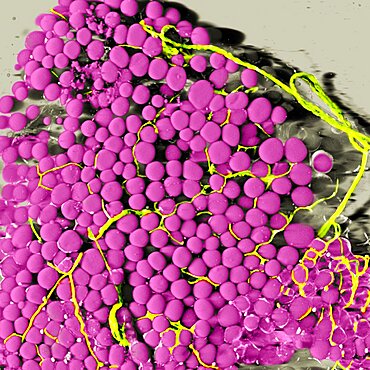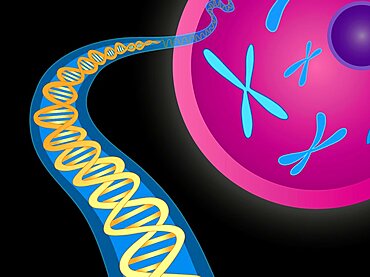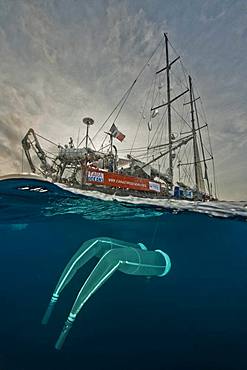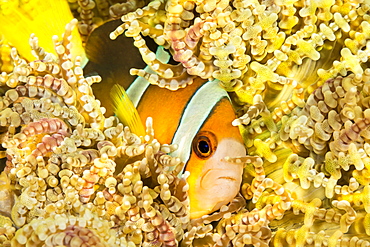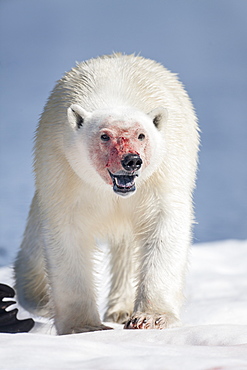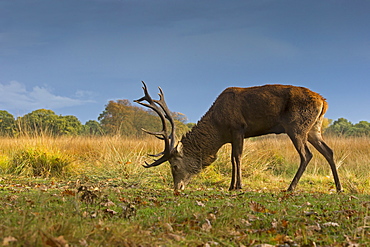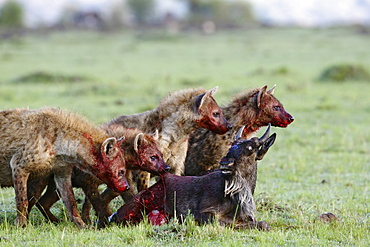Recent searches
Loading...
1349-1111 - Human Induced Pluripotent Stem Cells, LM
1349-726 - Phytoplankton bloom off Ireland, satellite image
1350-562 - Female scientist looks down to examine various cultures of peanut plant roots, Tifton, Georgia.
1178-31735 - Laboratory glassware with liquids on periodic table
1178-31752 - Gloved hand holding pipette with blue liquid above test tubes
1178-31740 - Laboratory glassware with liquids on periodic table
1178-31737 - Test tubes with liquids and pipette on periodic table
1178-31744 - Close-up of laboratory glassware with liquids
1178-31732 - Laboratory glassware with liquids against black background
1178-31741 - Laboratory glassware with liquids on periodic table
1178-31730 - Laboratory glassware with liquids against black background
1178-31747 - Gloved hand holding test tube with blue liquid
1178-31739 - Laboratory glassware with liquids on periodic table
1178-31769 - Close-up of scientist looking through microscope, molecular model in foreground
1178-31738 - Laboratory glassware with liquids on periodic table
1178-31742 - Molecular models and laboratory glassware with liquids on periodic table
1116-49672 - A research diver from the MOC Marine Institute glues broken coral back together at Molokini Marine Preserve off the island of Maui, Hawaii. The coral is tagged and will be monitored, Maui, Hawaii, United States of America
1116-49671 - Research divers from the MOC Marine Institute map out coral damage at Molokini Marine Preserve off the island of Maui, Hawaii. In the future, data from here will help to determine the health of Hawaii's reefs, Maui, Hawaii, United States of America
1116-49673 - Research divers from the MOC Marine Institute glue broken coral heads back together and map out coral damage at Molokini Marine Preserve off the island of Maui, Hawaii. In the future, data from here will help to determine the health of Hawaii's reefs, Maui, Hawaii, United States of America
832-389989 - Many different pumpkins (Cucurbita) and varieties, Baden-Wuerttemberg, Germany, Europe
832-389859 - Ears of corn in a field, rye (Secale cereale L.) Petkuser short straw, traditional agricultural cultivation, Open-air museum Domaene Dahlem, Berlin, Germany, Europe
832-389040 - Mallard ( Anas platyrhynchos) female in winter, flying over reeds with hoarfrost, Lower Saxony, Germany, Europe
1178-29593 - Female technician working in laboratory
1178-29603 - Female technician working in laboratory
1178-29600 - Female technician working in laboratory
1178-29594 - Female technician pouring liquid into vial
1178-29606 - Female technician working in laboratory
1178-28809 - Digitally generated image of Coronavirus
860-287450 - Tara Oceans Expeditions - May 2011. Tara with deployed plancton nets. On "station", the boat is drifting without engine or sails. Tara Oceans, a unique expedition: Tara Oceans is the very first attempt to make a global study of marine plankton, a form of sea life that includes organisms as small as viruses and bacterias, and as big as medusas. Our goal is to better understand planktonic ecosystems by exploring the countless species, learning about interactions among them and with their environment. Marine plankton is the only ecosystem that is almost continuous over the surface of the Earth. Studying plankton is like taking the pulse of our planet. Recently, scientists have discovered the great importance of plankton for the climate: populations of plankton are affected very rapidly by variations in climate. But in turn they can influence the climate by modifying the absorption of carbon. In a context of rapid physico-chemical changes, for example the acidification observed today in the world's oceans, it is urgent to understand and predict the evolution of these particular ecosystems. Finally, plankton is an astonishing way of going back in time ? a prime source of fossils. Over the eons, plankton has created several hundred meters of sediment on the ocean floors. This allows us to go back in time, to the first oceans on Earth, and better understand the history of our biosphere. More than 12 fields of research are involved in the project, which will bring together an international team of oceanographers, ecologists, biologists, geneticists, and physicists from prestigious laboratories headed by Eric Karsenti of the European Molecular Biology Laboratory. Galapagos
857-96101 - Side view of man crossing stream in Kanaka Creek Regional Park, Maple Ridge, British Columbia, Canada
1116-39726 - The Bubble Coral Shrimp (Vir philippinensis) is found only on this species of coral, Pleurogyra sinuosa. The brown oval objects are actually Acoel Flatworms (Waminoa sp) that feed on nutrients trapped in mucus covering the coral, Philippines
1116-39942 - The dragon shrimp (Miropandalus hardingi) on whip coral, is also known as a gorgonian sandaled shrimp, Philippines
1116-39714 - These two parasitic mollusks, Thyca crystallina, are growing on the host starfish, Linckia laevigata. This parasitic shell only attaches to this species of starfish, into which it burrows and sucks up nutrients, Philippines
1116-39939 - An Imperial commensal shrimp (Periclimenes imperator), photographed at night on the Spanish dancer nudibranch (Hexabranchus sanguineus), that it calls home, Philippines
1116-39727 - Clark's anemonefish (Amphiprion clarkii) in Beaded Sea Anemone (Heteractis aurora), Philippines
1116-39720 - This male Ring-tailed Cardinalfish (Ostorhinchus aureus) is protecting and incubating it's eggs by carrying them in his mouth, Philippines
1116-39725 - Mouth detail of a colourful and healthy Mushroom coral, Fungia fungites, that is growing on a tropical coral reef in the Philippines. Mushroom coral is unique in the coral world, in that it does not attach itself to the bottom, Philippines
1116-39938 - Mouth detail of a colorful and healthy mushroom coral (Fungia fungites) that is growing on a tropical coral reef. Mushroom coral is unique in the coral world, in that it does not attach itself to the bottom, Philippines
860-283238 - Red Deer in a clearing at sunrise in autumn, GB
860-282080 - Stag Red Deer standing among hinds in autumn, GB
860-284284 - Polar Bear walking on pack ice, Hudson Bay Canada
860-284290 - Portrait of Walrus resting on iceberg, Hudson Bay Canada
860-286141 - Crabronid six band bringing a fly in his gallery, France
860-283915 - Spotted hyenas eating a wildebeest young, East Africa
832-367510 - Moon jellyfish, Common jellyfish (Aurelia aurita), Baltic Sea, off Darss, Mecklenburg-Western Pomerania, Germany, Europe
1174-2216 - A young woman reaching up to admire an orchid growing in an indoor glasshouse in a botanical garden in New York City, West Kill, New York, USA
832-321732 - Natural History Museum, Vienna, Austria
832-321834 - Museum of natural history, castle Rosenstein, Stuttgart, Baden-Wuerttemberg, Germany
832-321731 - Natural History Museum, Vienna, Austria
832-314156 - DEU, Germany, Duesseldorf: Police NRW, Federal Police, technical crime investigation service. DNA analysis laboratory. |
832-314153 - DEU, Germany, Duesseldorf: Police NRW, Federal Police, technical crime investigation service. DNA analysis laboratory. |
832-314155 - DEU, Germany, Duesseldorf: Police NRW, Federal Police, technical crime investigation service. DNA analysis laboratory. |
832-363770 - Leaf of the tree of the traveler, Ravenala madagascariensis, rare type of a fan palm
832-255715 - Anatomical male figure and naked female figure standing around a tree with an engraved heart, exhibit in the German Hygiene-Museum, Dresden, Saxony, Germany, Europe
1161-1155 - Schoolboys at work during a Biology lesson at a school in Kathmandu, Nepal
832-150715 - Stromatolites, Earth's oldest fossils, Hamelinbay, Northwest Australia
832-150716 - Stromatolites, Earth's oldest fossils, Hamelinbay, Northwest Australia






